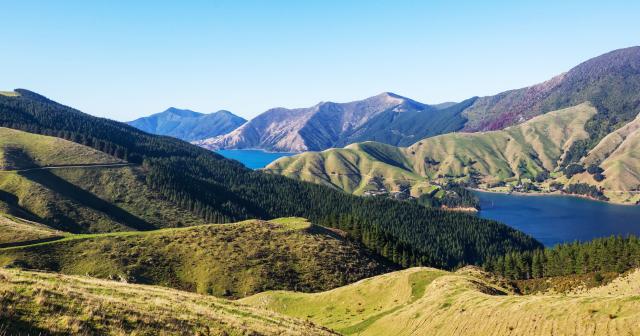This opinion editorial by B+LNZ Chair Kate Acland was published in the Sunday Star-Times on 10 August 2025.

Trade is the beating heart of New Zealand – pumping revenue into our communities and regions and helping us earn a living on the world stage.
But planting productive sheep and beef land in trees for carbon is clogging the arteries of our economy.
When we take whole sheep and beef farms out of production and lock it up in carbon farms, we restrict the flow of exports, jobs and opportunities.
The Government has set a goal of doubling exports by 2030, and sheep and beef farmers will be essential to achieving this goal. Nearly 20% of our export earnings – $10.4 billion in 2024 – came from the red meat sector.
This sector has a proud history of productivity and capturing value: doing more with less.
Despite a 7% reduction in volume, red meat exports increased by $1.2 billion last year and the outlook is incredibly positive for the next few years. There’s a global protein shortage and New Zealand’s farmers are well placed to meet this demand.
Since 1990, sheep numbers have fallen by over 50%, yet lamb export volumes have remained largely stable – demonstrating decades of efficiency improvements.
But productivity gains are not infinite.
The sector is under increasing pressure from large-scale land use change, particularly the blanket conversion of whole farms into forestry for carbon credits.
While production forestry plays a legitimate role in our export mix, and integrated planting can benefit both farming and biodiversity, this surge is not being driven by timber demand. It is the result of a carbon market skewed by poorly designed policy.
New Zealand is just one of two countries, the other is Kazakhstan, in allowing fossil fuel emitters to offset 100% of their emissions with forestry, without any obligation to cut actual emissions through proven technologies like electrification of transport and industry.
For over six years, Beef + Lamb New Zealand has led the way in warning that the Emissions Trading Scheme (ETS) is artificially incentivising afforestation on a scale that threatens the viability of the red meat sector.
Independent analysis shows that 300,000 hectares of whole sheep and beef farms were sold to forestry entities for conversion between 2017 and early 2025. We estimate this will rise to 350,000 hectares by year’s end – leading to the loss of at least 2.5 million stock units.
The impact is already being felt: meat processing plants are closing, jobs are being lost and rural communities are under pressure.
The Government has acknowledged the issue and proposed restrictions on ETS entry for certain land classes. However, these remain too permissive.
Beef + Lamb New Zealand estimates that up to 26,000 hectares of whole farms on land classes 6–7 could still be converted each year and entered into the ETS between 2025 and 2050.
Class 6 land is among the most productive in the sheep and beef sector, and even Class 7 land is economically viable. If these conversions proceed, a further 650,000 hectares could be lost to forestry by 2050.
Combined with the 350,000 hectares already converted, this would total 1 million hectares – or 19% of the sheep and beef sector’s five million hectares of productive grassland. That would mean an 18% drop in stock units by 2050.
When we consider that 25% of this country’s native vegetation sits on sheep and beef farms, that’s also a considerable impact on biodiversity.
This scale of land use change is not sustainable. It undermines one of our most efficient, high-value export sectors for short-term gains driven by carbon trading.
We are calling on the Government to go further and remove the ability for whole farm conversions to enter the ETS in all land classes.
To be clear: this would not prevent the planting of production forests where appropriate. Trees can, and should, still be planted where it makes sense.
But the ETS should not create perverse incentives that make it profitable to convert entire farms that are otherwise economically and environmentally productive.
On a 30-year time horizon, even moderate sheep and beef operations outperform production forestry in terms of returns per hectare, while also generating consistent export revenue, sustaining rural jobs and supporting vibrant regional economies.
There will always be land where forestry is the best use. But when carbon credit prices artificially inflate returns, we see trees planted on land better suited to food production and rural livelihoods.
Add in carbon credits, and sheep and beef is blown out of the water, but those returns are driven by policy settings, not the underlying productivity or long-term value of the land.
New Zealand will continue to need some offsetting. That’s why we support the proposal allowing up to 25% of a land parcel to be planted in trees and entered into the ETS. This strikes a balance – encouraging collaboration between foresters and farmers, promoting mosaic landscapes and improving both biodiversity and economic outcomes.
To achieve our export ambitions and climate goals, we must design a smarter ETS – one that encourages real emissions reductions and maintains the integrity of our most productive land. The future of rural New Zealand, and the strength of our national economy, depends on it.
We can’t double exports if we’ve planted our best farmland in pine trees.
We can’t double exports from our primary sector if our breeding land is covered by trees.